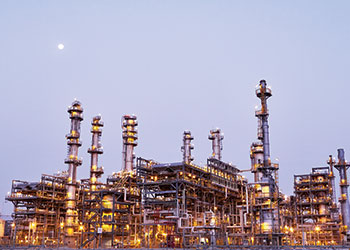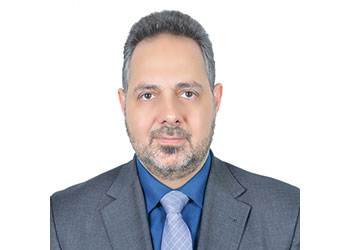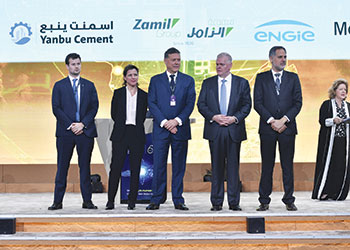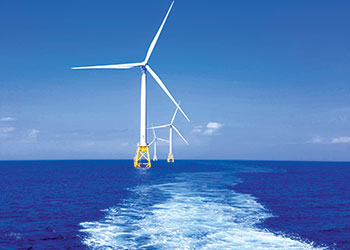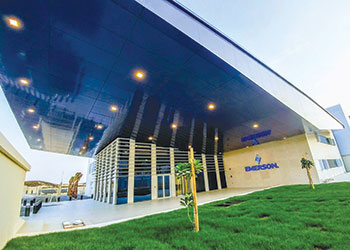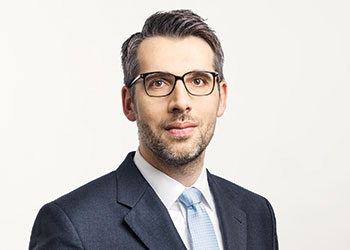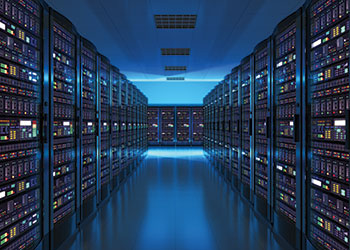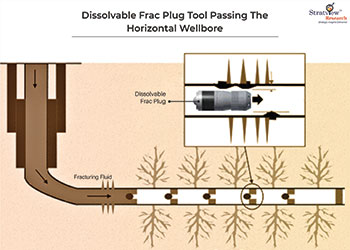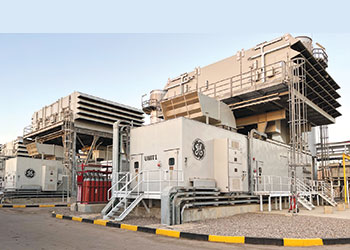
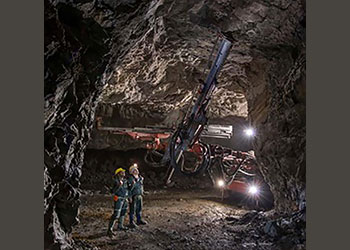 There are a lot of untapped opportunities in the mining sector in KSA
There are a lot of untapped opportunities in the mining sector in KSA
The net-zero transition relies on minerals and metals, investments in which need to be scaled up substantially. And that transition is opening the path for KSA to become a global leader in the sustainable production of minerals and metals, writes Abdulaziz Khattak
As the debate around energy transition amps up, the world shouldn’t lose sight of the fact that reaching a net-zero world is almost completely dependent upon materials that are mined, rather than fossil fuels.
According to the World Bank estimates more than 3 billion tonnes of minerals and metals are required for the necessary wind, solar and geo-thermal power, and energy storage if the world is to achieve a ‘below 2 deg C increase’ future.
The bank says that by 2050 the production of minerals, such as graphite, lithium, cobalt and copper needs to increase by nearly 500 per cent to meet the future demand for clean energy technologies.
Khalid Al-Mudaifer, Vice-Minister for Mining Affairs, Ministry of Industry and Mineral Resources, says minerals are indispensable to the energy change to renewables.
"Decarbonisation – the net-zero transition – cannot happen without minerals and metals; a lot of minerals and metals. We need to scale up discoveries and we need to scale up production," he told a forum in London in November last year.
The Kingdom, in light of its Vision 2030, offers unprecedented investment opportunities in various sectors including renewable energy, industry, communications, information technology, biotechnology, tourism, building and construction, and mining.
Its Ministry of Industry and Mineral Resources seeks to protect the mining sector and maximise its value per the goals of the Kingdom's Vision 2030 and the National Industry Development and Logistics Program, to transform mining into the third pillar of the national industry.
AREAS OF OPPORTUNITY IN THE KINGDOM
Saudi Arabia in general is under-explored in respect to the solid minerals. There are a lot of untapped opportunities in the mining sector in KSA.
The Arabian Shield within Saudi Arabia, which spans over an area of 600,000 sq km is a major source of precious and base minerals. To date over 48 minerals have been identified in the Kingdom with, at least, 15 minerals that are commercially viable.
In a report published by Watts, Griffis, and McOuat (WGM) and commissioned by the Deputy Ministry for Mineral Resources (DMMR) to conduct a comprehensive mineral potential assessment of the Kingdom, Saudi Arabia’s potential to produce metals is largely vested in the deposits that serve as sources for gold, copper, zinc, lead and silver.
But while potential exists in the long-term for other metals, this production will be inextricably tied to commodity markets and metal prices, and continuing exploration to fully define known resources and to discover new resources.
The ministry has already identified 60 viable upstream opportunities in mining and many others are expected to be identified over the next few years.
The Kingdom has rich reserves of many metals including gold, copper, zinc and lead. According to estimates, the country’s has gold reserves worth 56,263,984 ounces with a gross in-situ value of $69 billion; copper deposits of 2,243,000 tonnes ($17 billion value); zinc deposits of 4,383,900 tonnes ($9 billion); lead deposits of 448,900 tonnes ($0.8 billion); silver deposits of 95,938,000 ounces ($2 billion); and 108,000 tonnes of nickel deposits with a gross in-situ value of $1.6 billion.
CRITICAL ROLE OF MULTI-STAKEHOLDER PARTNERSHIPS
The first step to catalysing prosperity beyond the life of the mine is creating a shared vision of prosperity with all stakeholders and owners, in order to create this type of ecosystem. At the core of this is trust.
Trust is a high bar, especially when combatting historically negative perceptions. It requires radical transparency from everyone involved and certainty of legal frameworks that protect the interests of the entire group.
Saudi Arabia is well placed to further scale-up mining, and build integrated value chains. It has a stable government and stable fiscal policies; it has experience; it has low-cost energy; and above all it has excellent infrastructure.
Al-Mudaifer says mineral and metal supply chains need to become more resilient as the transition accelerates. "The pandemic and the geopolitical tensions have shown their weaknesses. And we have seen a rise in ‘resource nationalism’. As a consequence, we see cost spikes for some minerals up to 350 per cent."
Outlining clear roles for government, mining companies, communities, and downstream companies is key, as is ensuring that there’s clear representation across all of the various stakeholder and owner groups.
The only way to deliver better outcomes is to create an environment built on respect and collaboration. Government should create the "sandbox" (environment) with the appropriate guardrails (constraints), so that discussions take into account the unique aspects of each development project and its jurisdiction but still adhere to a co-created set of principles.
It’s standardised but flexible, and creates an ecosystem where entrepreneurship and innovation can flourish and move downstream.
Central governments must be careful to avoid overly prescriptive policies and regulations that end up perpetuating issues on the ground or are too commodity-specific to be actionable, but that still provide a standardised framework.
In addition to this, a government plays a key role in creating development partnerships and industrialisation of the mineral value chain by providing the springboards that spur this type of activity.
Making it easier to create new businesses, improving access to capital, investing to provide the right infrastructure, and creating hubs, often geographical, to catalyse ecosystems around specific challenges are a few ways a country can accomplish this.
INDUSTRIAL HUBS WITH DOWNSTREAM PARTNERS
There is also an opportunity to engage more downstream global companies (such as auto OEMs (original equipment manufacturers), battery manufacturers, etc) to create regional ‘industrial hubs’.
Increased societal, security, and environmental demands across the entire value chain mean downstream players are actively looking for ways to engage with mineral development, to give them greater visibility into their own supply chain and move downstream activities closer to the source.
Downstream companies, from automotive OEMs to producers of batteries and wind turbines, are beginning to realise that poor understanding and/or visibility into mining when it comes to sourcing means that their ability to deliver on their aggressive growth goals are undermined. General Motors' aim to move to an all-EV lineup by 2035 is an excellent example of this.
When governments invest the wealth created from mining activities into building the infrastructure necessary to mine these resources, in addition to the activities aligned with our expanded notion of industrialisation described earlier, they’re also creating opportunity for greater downstream value.
Involving those companies in the planning and development of these projects from the beginning can lead to even greater prosperity not just for the mining companies and the immediate surrounding communities, countries, and regions, but for the entire value chain.
It also creates opportunities for investment from players that typically haven’t been able to or haven’t been interested in investing in purely resource projects, distributing the financial burden. This reframes the opportunity to be more attractive and will positively impact both the availability and cost of capital, as well as the talent pool.
An extension of this opportunity lies in addressing the historical challenge mining has faced when it comes to countries’ hesitance to work with one another.
Creating ‘regional hubs’ as described above shifts countries from a nationalistic approach to a regional one, distributing value more evenly and breaking barriers to collaboration and trust that have stifled innovation and investment in and leverage of new and unique technologies/capabilities.
Stimulating innovation unleashes the potential of a country’s human capital and leverages the wealth generated from mineral development to catalyze economic prosperity way beyond the mine.
Nearly all players across the value chain are incentivised to make this happen, and are willing to act on it as the world races against a ticking clock to hit energy transition targets.
This industrialisation of the mineral value chain requires a completely new type of public and private sector collaboration and greater level of trust, coupled with increased investment in new technologies and methods.
The Future Minerals Forum is a major step in convening these types of conversations across countries and a demonstrated investment in and commitment to this type of approach.
The forum’s second edition is scheduled to take place from January 10-12 in Riyadh.




















































































